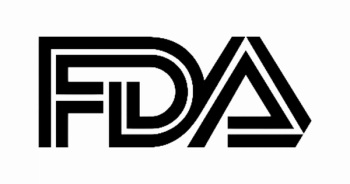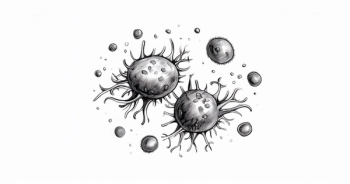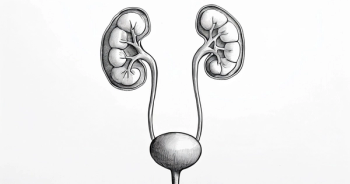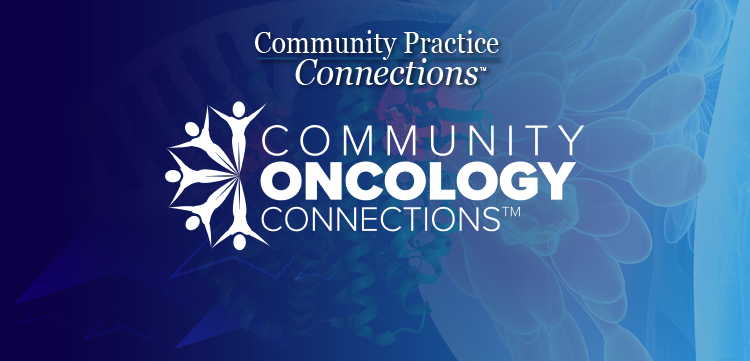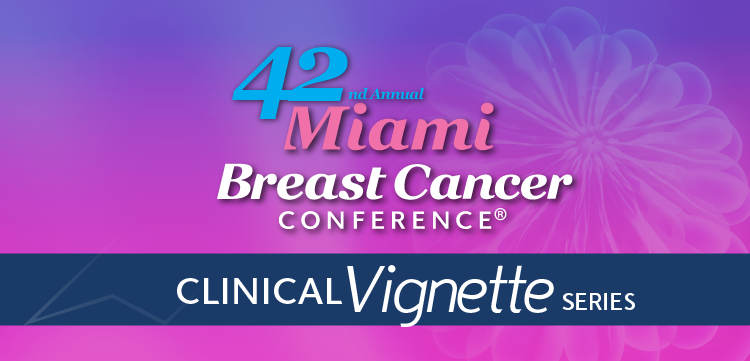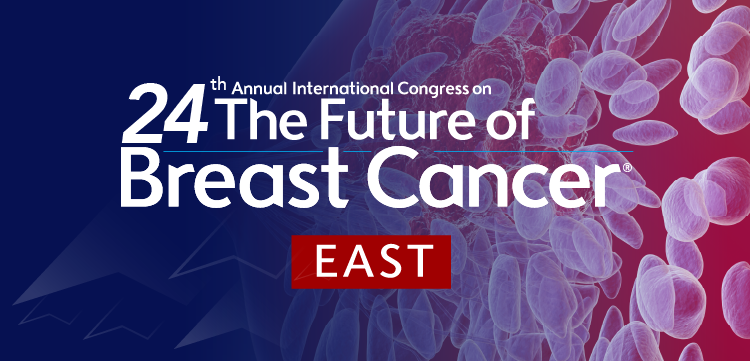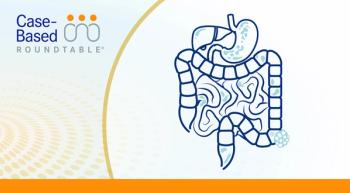
Targeted Therapies in Oncology
- March II 2025
- Volume 14
- Issue 4
- Pages: 22
HIF-2α Inhibitors Make Significant Inroads in Renal Cell Carcinoma
INVESTIGATORS AND CLINICIANS anticipate that the next wave of therapeutic approaches in renal cell carcinoma (RCC) will target hypoxia-inducible factor-2 (HIF-2), a transcription factor that is overactive in clear cell RCC. Loss of function in the VHL gene is a hallmark of clear cell RCC pathogenesis and leads to HIF overexpression.1
The pVHL functions as the substrate recognition component of an E3-ubiquitin ligase. The ligase targets the α subunit of HIF-2 (HIF-2α), leading to proteasomal degradation under normal oxygen conditions.2
In low-oxygen environments, HIF-2α binds to HIF-1β with the result being the development of an active transcription complex that triggers the production of proteins responsible for angiogenesis, proliferation, and migration.3
Initial investigation of HIF-2α inhibitors, such as MK-3795 (previously known as PT2385), in preclinical studies demonstrated promising results. For example, a first-in-human dose- escalation and dose-expansion study investigating MK-3795 in 51 patients with heavily pretreated clear cell RCC reported favorable safety and activity.4 Subsequently, a more potent and selective second- generation small molecule HIF-2α inhibitor, belzutifan (Welireg), was developed.
Final analysis data evaluating belzutifan were presented in the LITESPARK-005 study (NCT04195750) during the European Society for Medical Oncology Congress 2024.5 Lead author Brian Rini, MD, provided insights into the trial and looked ahead to promising research in an interview with Targeted Therapies in Oncology.
The agent showed significant benefits compared with everolimus (Afinitor) in treating advanced clear cell RCC. Specifically, patients who received belzutifan experienced an improved progression-free survival (PFS) rate and objective response rate (ORR) vs those treated with everolimus. However, the LITESPARK-005 trial did not find a clear advantage in terms of overall survival (OS).
“The LITESPARK-005 trial was the registrational study that eventually led to the agent’s approval,” Rini, the chief of the Clinical Trials Program, Ingram Professor of Cancer Research, and professor of medicine (Hematology/Oncology) at Vanderbilt-Ingram Cancer Center in Nashville, Tennessee, said. “Belzutifan had advantages over everolimus in terms of response rate, tumor shrinkage, as well as,” Rini added.
LITESPARK-005 Trial
In the trial,5 746 patients were randomly assigned to receive belzutifan (n = 372) or everolimus (n = 360). In the belzutifan arm, 318 patients (85.5%) discontinued treatment compared with 355 patients (98.6%) who discontinued treatment in the everolimus arm.
Primary end points were PFS and OS. Secondary end points were ORR and duration of response (DOR).
At 12 months, the PFS rate was 33.7% for belzutifan vs 17.6% for everolimus. At 24 months, the PFS rates were 17.5% vs 4.1%, respectively. Patients in the belzutifan arm had a median PFS of 5.6 months (range 3.8-6.5) compared with 5.6 months (range, 4.8-5.8) for the everolimus arm (HR, 0.75; 95% CI, 0.63-0.88).
Similarly, at 12 months, the OS rate was 67.9% for patients treated with belzutifan vs 65.8% for patients treated with everolimus. At 24 months, the OS rate for belzutifan was 45.2% vs 41.2% for everolimus. Median OS was 21.4 months (range, 18.2-24.3) for the belzutifan arm vs 18.2 months (range 15.8-21.8) for the everolimus arm (HR, 0.92; 95% CI, 0.77-1.10).
At the data cutoff of April 15, 2024, subgroup analysis of PFS and OS favored patients treated with belzutifan.
According to investigators, patients treated with belzutifan had an ORR of 22.7% (95% CI, 18.6%-27.3%) vs 3.5% (95% CI, 1.9%-5.9%) for those treated with everolimus, with an estimated percentage point difference of 19.2% (95% CI, 14.8%24.1%). Complete response of patients treated with belzutifan was 3.5%, partial response was 19.3%, stable disease was 38.2%, and progressive disease was 34.0%. Responses for patients treated with everolimus were 0.0%, 3.5%, 65.9%, and 21.5%, respectively.
The DOR rate at 12 months for belzutifan was 71.1% vs 61.5% for everolimus. At 24 months, the DOR was 43.7% vs 23.1%, respectively. Median DOR was 19.3 months (1.9+ to 40.1+) for belzutifan vs 13.7 months (range, 3.8-29.5+), respectively.
At the trial conclusion, investigators reported that with a minimum follow-up of over 2 years, more patients remained on treatment with belzutifan compared with everolimus; however, significant improvement in OS was not observed. They also reported that no new safety concerns for belzutifan were observed.
Their final analysis supports belzutifan as a treatment option in advanced clear cell RCC after PD-L1/PD-1 inhibitor and vascular endothelial growth factor receptor tyrosine kinase inhibitor (VEGF-TKI) therapy, with belzutifan continuing to show PFS and ORR benefits over everolimus, including durable responses lasting more than 2 years.
In December 2023, the FDA approved belzutifan for patients with advanced RCC following a PD-L1/PD-1 inhibitor and a VEGF-TKI, based on earlier findings from LITESPARK-005 that demonstrated a statistically significant improvement in PFS with belzutifan vs everolimus (HR, 0.75; 95% CI, 0.63-0.90; 1-sided P =.0008).6 The agent also led to an improved ORR of 22% (95% CI, 18%-27%) vs 4% (95% CI, 2%-6%) with everolimus. OS results were immature at the time of the analysis with 59% of deaths reported, but no detrimental trend was observed.7
“This is just the beginning of the story of the role of belzutifan and HIF inhibitors in kidney cancer,” Rini said. “The agent is being explored in unique combinations, in earlier stages of the disease, as well as in the adjuvant setting,” Rini continued.
Additional RCC Approaches Explored
NKT2152
Findings from preliminary results of a phase 1/2 study (NCT05119335) evaluating another oral HIF-2α inhibitor, NKT2152, were also presented at the ESMO Congress 2024.8
The agent demonstrated robust antitumor activity in 113 heavily pretreated, high-risk patients with advanced clear cell RCC. The dose-escalation portion (part 1) enrolled 60 patients and the clinical pharmacology cohorts (n = 17), and the dose-expansion portion (part 2) enrolled 40 patients with 10 patients in the post-belzutifan cohort.8
Overall, the trial evaluated 4 daily doses and 4 loading/maintenance dosing regimens. In the part 1 escalation portion of the trial, patients had a median follow-up of 20.8 months (range, 10.331.2) and the overall median follow-up was 13.5 months (range 0.23-31.2).8
In the once-daily regimen, 50-mg, 100mg, and 300-mg doses were evaluated with 3 patients in each dosage cohort.8
The loading/maintenance regimen consisted of 200 mg for 28 days, followed by 50 mg daily (n = 9); 200 mg for 14 days, followed by 50 mg daily (n = 12); 300 mg daily for 7 days, followed by 200 mg weekly (n = 13); and 100 mg daily for 7 days, followed by 100 mg weekly (n = 11).8
In the phase 2 portion, 2 randomized dose evaluations are being carried out: 200 mg daily for 14 days, then 50 mg daily or 100 mg daily for 7 days, then 100 mg weekly.8
Overall, in 100 efficacy evaluation patients, investigators reported an ORR of 20% and median PFS of 7.4 months. For patients in part 1 (n = 57), an ORR of 26.3% and median PFS of 9.2 months were reported.8
In particular, in those patients with no prior mTOR inhibitor experience and at least 9 months of study follow-up (n = 45), an ORR of 35.6% and a median PFS of 12.7 months were reported.8
The safety profile was consistent with the class of agent with linear pharmacokinetic and significant and prolonged erythropoietin suppression observed at all dosage levels.8
Benmelstobart
Another novel therapy evaluated during the ESMO Congress 2024 was the combination of anlotinib and the anti–PD-L1 antibody benmelstobart in an open-label, phase 3 study (NCT04523272; ETER100).9 The study compared the combination with sunitinib (Sutent) as first-line treatment for patients with advanced clear cell RCC. Patients were eligible if they had locally advanced or metastatic clear cell RCC and had received no systemic antitumor treatment.
A total of 531 patients were randomly assigned to receive either 12 mg of anlotinib and 1200 mg of benmelstobart (n = 266) or 50 mg of sunitinib (n = 265). The primary end point was PFS and secondary end points were PFS, OS, and ORR. A total of 138 patients discontinued the study in the combination arm and 209 patients discontinued the trial in the control arm.
The full analysis set (FAS) was comprised of 527 patients and the safety analysis was comprised of 528 patients.
Patients were stratified by International Metastatic Renal Cell Carcinoma Database Consortium (IMDC) risk groups: favorable vs intermediate vs poor. The trial was designed to reach 80% power with 385 PFS events in the FAS, with a 2-sided α, with an HR of 0.75.
The median age was 60 years, (range, 54.067.0) with the majority of patients younger than 65 years (66.6%) and male (75.9%) in the full cohort. In the combination arm, the majority of patients were ECOG performance status 1 (72.7%) vs 73.8% in the control arm.
In the combination arm, there were 14.0% of patients with favorable risk, 71.2% with intermediate risk, and 14.8% with poor risk. In the control arm, IMDC risks were 13.7%, 71.9%, and 14.5%, respectively.
After a median follow-up of 18.7 months, the PFS for the combination was 19.0 months (95% CI, 15.3-22.8) vs 9.8 months (95% CI, 8.4-12.4) with an HR of 0.53 (95% CI, 0.420.67; P <.0001). In addition, subgroup analysis of blinded independent central review PFS favored the benmelstobart plus anlotinib combination vs sunitinib. A higher ORR for the combination was also observed, 71.6% vs 25.1%. Investigators reported that OS rate was still immature.
The combination was also well tolerated with a safety profile that was consistent with each individual agent. In particular, patients in both the combination arm and control arm experienced the same percentage of treatment-emergent adverse events (TEAEs; 99.2%), grade 3 or higher TEAEs (75.0% vs 74.6%), and treatment-related AEs (98.1% vs 98.1%).
These findings support the use of benmelstobart and anlotinib as a new first-line treatment for advanced clear cell RCC.
OPTIC RCC Trial (NCT05361720)
Turning to his current research, Rini noted the phase II OPTIC RCC study (NCT05361720).10 Standard therapy for clear cell RCC involves treatment with a PD-1 inhibitor, such as nivolumab (Opdivo), coupled with either an anti–CTLA-4 inhibitor, such as ipilimumab (Yervoy; IO/IO), or an anti-VEGF TKI, such as cabozantinib (Cabometyx; IO/TKI). Currently, there is no definitive evidence to guide a physician’s choice between an IO/IO vs an IO/TKI combination. This phase 2 trial tests whether using genetic testing of tumor tissue to select the optimal treatment regimen works in treating patients with advanced or metastati cclear cell RCC.
“The OPTIC RCC study was designed to better understand if genetic testing of tumor tissue would help improve prediction of patient benefit with currently approved regimens in advanced RCC,” Rini said.
Tissue samples will be obtained from patients with newly diagnosed RCC. Analysis of the tumor tissue through RNA sequencing reveals the expression of angiogenesis- or immune-related genes and are biologically classified as either angiogenic or immune inflammatory clusters.
Patients with angiogenic clusters are then treated with a standard combination of cabozantinib and nivolumab. Conversely, immune inflammatory cluster patients will receive ipilimumab and nivolumab. Additionally, the primary end point of the trial is ORR, according to RECIST v1.1 criteria.
Investigators hypothesized that the identification of a tumor’s genetic makeup will help match patients with their optimal treatment approach.
“This trial represents an important step toward treating patients with RCC according to disease biology rather than relying on clinical factors, clinician bias, or other less personalized methods,” Rini said.
Novel combinations involving targeted therapy and immunotherapy have resulted in improved outcomes for patients with advanced or metastatic RCC. However, there remains a clear unmet need that investigators continue to explore.


